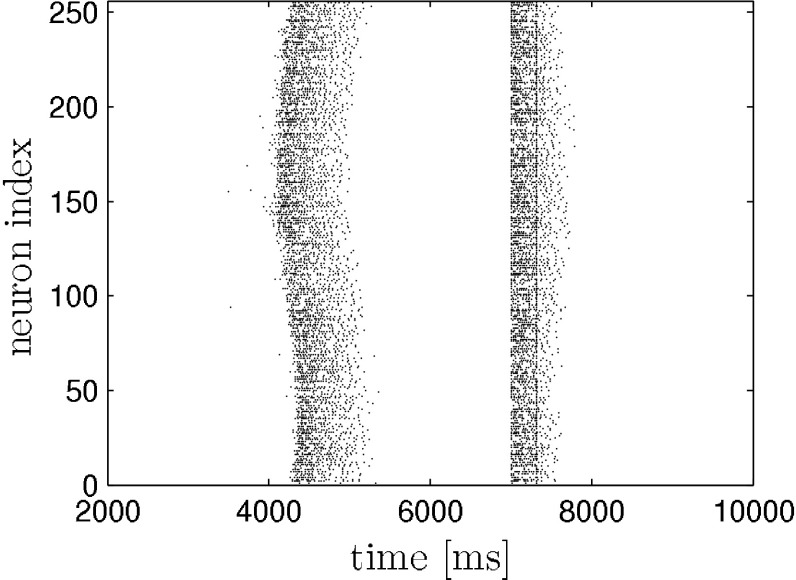Fig. 1.
Response of neural network to two consecutive strong stimuli (ISI = 310 ms, I s = 1 μA) as in (Shu et al. 2003). The first stimulus causes an immediate transition from the down to the up state. The following second stimulus (straight line within second up state) determines the remaining time the system spends in the up state. It causes a massive influx of calcium which in turn activates the inhibiting I KCa (not shown) that then leads to the termination of the up state. Only pyramidal neurons are shown. The stimuli are applied to each neuron in the network

